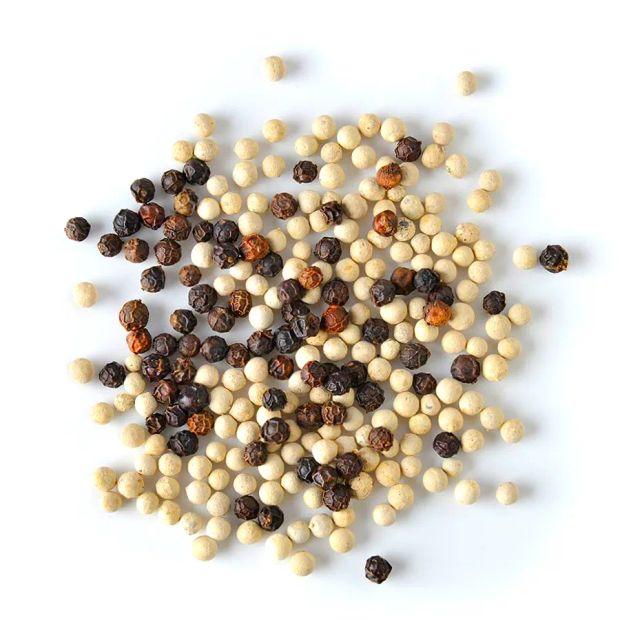White Pepper vs. Black Pepper: What Sets Them Apart?

When you think of pepper, chances are you're imagining the familiar black specks that fill the shaker. But did you know pepper isn't just black? It's a bit more complicated than that!
White pepper comes from the same plant as black pepper, but the key difference lies in how they're harvested and processed. Discover what sets white pepper apart from black pepper, along with tips on how to incorporate white pepper into your favorite dishes.
What is White Pepper?
White pepper, like black pepper, is derived from the berries of the pepper plant, scientifically known as Piper nigrum. The main distinction is that white pepper comes from fully ripened berries that are soaked in water to ferment. After this, the outer skin is removed, leaving just the inner seed.
Since the outer skin is removed, some of the pepper's flavor, including piperine, is lost. As a result, white pepper is generally milder than black pepper.
While black pepper is far more common in American kitchens, white pepper is often used in light-colored dishes for aesthetic reasons. This tradition began in French cuisine, and it is also widely used in Chinese, Vietnamese, and Swedish cooking.
White Pepper vs. Black Pepper
The primary difference between white and black pepper lies in their harvesting and processing methods. White peppercorns are picked when fully ripe, soaked in water, and then stripped of their outer layer.
On the other hand, black peppercorns come from unripe berries that are dried, which turns their skin black. While black pepper delivers a sharper, spicier heat (thanks to the piperine), white pepper has a more earthy, musty flavor.
Health Benefits of White Pepper
Like black pepper, white pepper can help promote digestive health and accelerate digestion. It’s also low in calories, making it a flavorful alternative to salt in dishes.
Although white pepper contains small amounts of vitamins and minerals such as vitamin C, calcium, iron, and manganese, you would likely need to consume a significant amount to experience any substantial health benefits.
How to Use White Pepper
There are several reasons you might opt for white pepper instead of black pepper. If you're seeking flavor without the heat or dark specks of black pepper, white pepper is the ideal choice.
For instance, white pepper is often used in creamy soups or chowders to avoid visible pepper specks. Due to its popularity in Asian cuisine, particularly in Chinese soups, marinades, and stir-fries, many associate white pepper’s flavor with these dishes. Interestingly, while pepper originates from India, today Vietnam is the top producer of pepper.
If you're thinking about swapping white pepper for black, or vice versa, consider how this might change the flavor of your dish. White pepper tends to have a more intricate flavor, thanks to its longer ripening process and fermentation.
How to Store White Pepper
White pepper has a shorter shelf life compared to black pepper. However, whole peppercorns last longer than ground pepper. To maintain its freshness, store it in an airtight container away from light. Whole white peppercorns can last up to three years, while ground white pepper begins to lose its potency after only three months.

1

2

3

4

5
Evaluation :
5/5